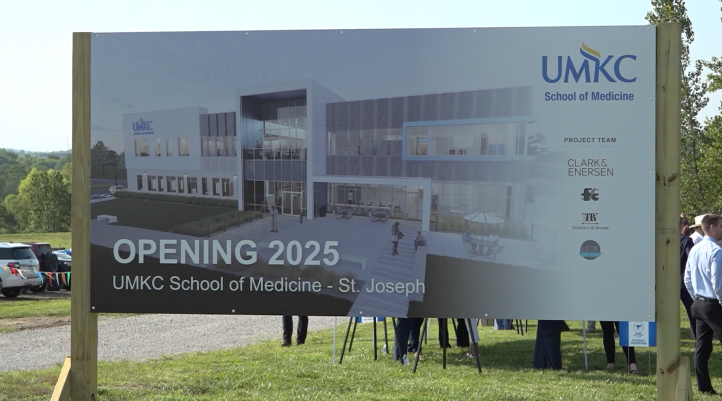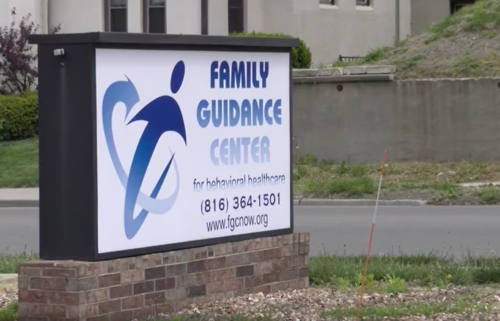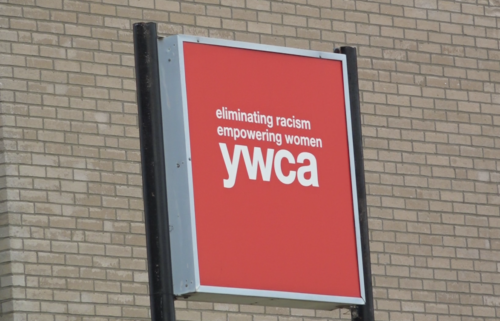Mosaic and UMKC partner to train St. Joseph’s first graduating class of doctors

By Jazmine Knight
It all started 53 years ago, when the University of Missouri — Kansas City Medical School was established by some visionaries who believed medical education could be taught in a better way.
“A better way consisted of a couple of things,” said Dr. Alexander Norbash, UMKC Medical School dean and professor. “One of the things that it consisted of was they felt that we practiced medicine as teams.”
Whether the goal is to be a physician, nurse, or social worker, each student should learn how to become a doctor as part of a team compared to just studying out of a textbook and seeing patients on a one-on-one basis.
Within each team is a docent, which is an experienced physician and role model who teaches medicine as well as compassion. Norbash said it’s all about interactions and treating the patient with dignity.
“You have a big brother, little brother, big sister, little sister. So the learning model was different. It wasn’t just about the books,” he said.
The other thing that makes UMKC’s program stand out from others is its level of experience each student gets from day one.
“Our structure is from day one, you learn medicine,” Norbash said.
No matter the campus or the student’s graduation year, students are seeing patients on their very first day.
“You might see a patient with anemia, a patient with hypertension, and a patient who’s got terrible pancreatitis or diabetes. So you have a prolonged opportunity to learn about medicine,” said Norbash.
UMKC believes having this prolonged opportunity and the ability to collaborate with a docent and those around you, ultimately makes students better, more caring physicians.
One big difference between the UMKC six-year program and the four-year program in St. Joseph, is that Kansas City students can have the same docent all four years. Students in St. Joseph have the opportunity to visit different clinics where they might collaborate with multiple docents.
“So why do we focus on Saint Joseph, why decide to do this there? First of all, there are not enough physicians, period,” said Norbash.
Another reason for UMKC’s concentration in St. Joseph is the even greater shortage of physicians in rural settings.
“What we also see in rural settings is we see a higher incidence of everything. Higher incidence of cancer, higher incidence of heart disease, higher incidence of diabetes,” Norbash said.
It even leads to a lower life expectancy for rural residents compared to urban areas. Through this Mosaic Life Care and UMKC partnership the goal is to increase the likelihood of students staying and practicing in rural locations post graduation to care for diseases and symptoms that rural residents struggle with.
“We have 16 individuals,” said Norbash. “They’re superstars. These individuals are bright eyed, hardworking, really thoughtful. They’re the best medical students you could possibly imagine.”
Each student has to pass licensure examinations which shows their medical knowledge.
“Test scores at Saint Joseph campus have been exceptionally high,” Norbash said.
This shows that medical students feel good about the teaching that they are receiving and that their teachers or docents are doing a good job teaching the curriculum.
According to Norbash, one of the biggest challenges of creating this partnership with physicians is convincing them to see this as a long term advantage.
“Having that medical student is going to slow me down a little bit. And I’m not going to see as many patients and I’m not going to make as much salary,” Norbash explained as the reasoning behind most physicians’ hesitance with the program.
However, Mosaic physicians understand that this program also gives them a pipeline of talent. Norbash says Mosaic staff have been incredibly receptive to the program and each physician has served as an amazing role model for the students.
Dr. Norbash thanks Davin Turner for championing this project at the management level and Brenda Shields for her assistance with finding funding to make the program viable. Norbash is also extremely thankful to the St. Joseph community for the support they have provided along the way
Norbash also says UMKC and Mosaic already have the ball rolling on a residency program that will hopefully be starting in the next year or two.
“There are other trainees that potentially we could think about training in the rural setting,” he said.
Currently, UMKC has 11 to 12 outlying clinics in St. Joseph, Albany, Maryville and other locations where medical students rotate.
Looking toward the future, Norbash hopes to expand the program for not only internal medicine and family practice students but possibly even surgical and psychiatric residents as well.



